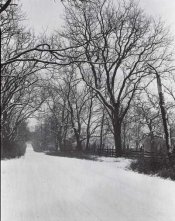DonF
Member
I decided to break this out of the discussion on using hydrogen peroxide and citric acid for bleaching reversal prints, as it is specific to using the Kodak R-9 bleach formula.
I am using graded #2 Arista Edu RC glossy 5x7 paper, cut to fit a 4x5 film holder. Using graded paper allows working under safelight conditions.
I put together this video that show the exposure and complete darkroom process.
Final image scan from video:

Here are a few sample prints from the shoot:




...and a high key portrait of my daughter and co-conspirator in these explorations, Jenni. Same process.

Another high key shot of an oldie...

Best regards,
Don
I am using graded #2 Arista Edu RC glossy 5x7 paper, cut to fit a 4x5 film holder. Using graded paper allows working under safelight conditions.
I put together this video that show the exposure and complete darkroom process.
Final image scan from video:
Here are a few sample prints from the shoot:
...and a high key portrait of my daughter and co-conspirator in these explorations, Jenni. Same process.
Another high key shot of an oldie...
Best regards,
Don
Last edited:








 In dozens of tests I haven't gotten pure bright whites using H2O2 bleach without resorting to pot ferri reducer at the end. ( Which is simple enough, and I don't mind ). So FWIW my experience so far matches Don's.
In dozens of tests I haven't gotten pure bright whites using H2O2 bleach without resorting to pot ferri reducer at the end. ( Which is simple enough, and I don't mind ). So FWIW my experience so far matches Don's.



